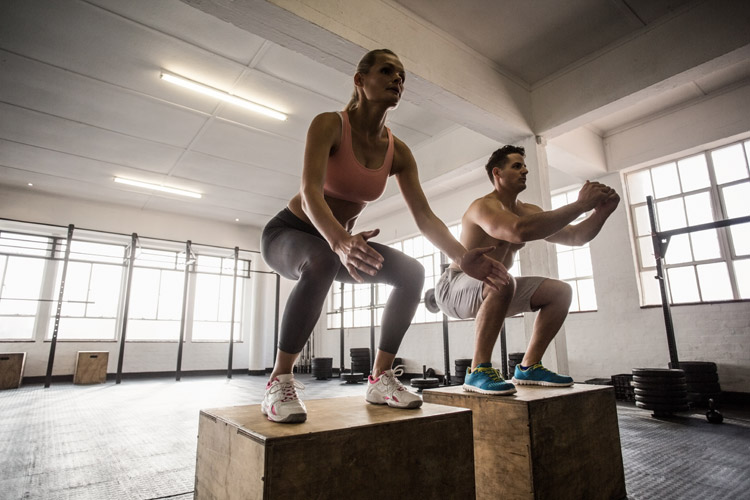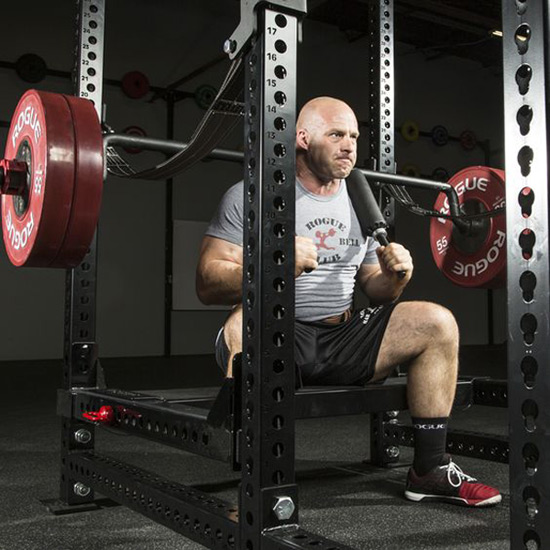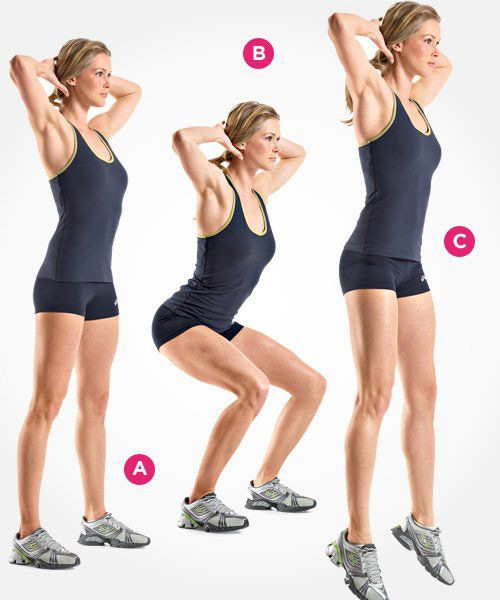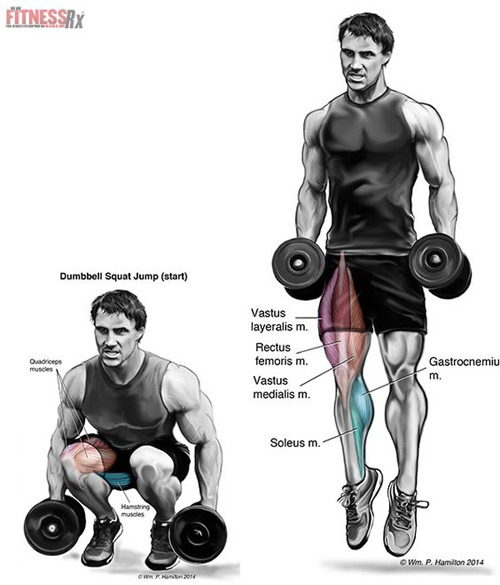Squat workout for beginners – all you need to know

Set yourself up for squat workouts with this guide
Squatting is an important activity in our life generally. Considering the amazing ability of infants to squat and pick their toys perfectly, the necessity of elderly ones to actively sit/stand or the impressive strength of the elite bodybuilder; obviously, squatting is more or less a basic and necessary human movement. Unfortunately, few people know how to properly squat, while others simply don’t engage in it. Apart from the general importance of squat movements, it is also a requirement to improve strength, size and general workout patterns in the gym.
One very important fact beginners should understand is; just like any other workout exercise, repeatedly engaging in squatting under load will harm and injure the body if it has a wrong pattern. In more details; no matter the quality of squat programs you might participate in, it won’t make any difference if the technical aspects that promote good health are not addressed.
If the squat pattern is not efficient, adding more strength or effort is technically useless. However, there are some factors that might determine the efficiency of squat workout for beginners and minimize risks of injury. These factors are:
- Proper optimization of your structural potential.
- Picking the perfect plan or variation that goes in line with your goals and capabilities.
Considering and implementing these factors in your squat patterns will definitely reduce the chances of injuries and maximize your workout gains in the long run.
In order to perform an efficient squat pattern, you must possess the right amount of discipline and focus. In other words, your mobility in the hips, shoulders, ankles and spine must be up to par. In addition, you should also be very stable in the upper – back and hips to maintain a strong, safe spine position while generating force from your hips. These requirements are also known as the squat pattern prerequisites. It is only right that these requirements are met before moving to complex squatting workout patterns.
As soon as these requirements are met, then you can undertake complex squatting workout patterns like squat variation, individualized cueing, foot position, programming etc. However, due to the complicatedness of these complex squat patterns, it will be best to get a professional trainer to guide and position you for success. Fortunately, while you are facing challenges with your personal stability/mobility deficits that might prevent you from some squat pattern variations; you can enjoy a similar training effect from other variations.
The main aim of any form of exercise that involves major squat workouts is to increase jump height ability and speed. In the light of this fact, you should ideally include jumping with heavy weights into your workout scheme (not just squatting with heavy weights). It is only ideal to keep improving to the point where you can easily jump higher while using light weights to squat.
There are some very important factors you will need to acknowledge when undergoing squat workout patterns.
- The first factor you should consider is the speed improvement aspect; it is basically concerned with how you begin your movement. It is also known as the “starting factor” or the “starting speed”.
- The second factor is the massive strength required to go into the air.
- The third and last factor; reactive strength does not greatly affect the turnout of squat workouts.
In the event that you are experiencing challenges when performing major squat patterns, try a different variation that will cater for your exercise deficits. Discovering the best squat variation will keep you healthy, maximize the efficiency of your squat workouts, and enable you to move to even more complex variations. For starters, below are some basic squat progressions and the inconspicuous mobility that the lift requires:
The Box Squat

Via roguefitness.com
This squat progression is very effective and fairly challenging. Here some guidelines to engage in the Box Squat progression:
- Firstly you will sit, obviously, on a box while spreading your legs far apart.
- Next, figure out your best back squat weight. The Box Squats will implement about 55 percent of this weight.
- As soon as the weight is achieved, you will utilize your hips and hamstrings alone to come up off the box.
- Engage in two – five reps in your Box Squat sets (and remember to pause between each rep).
Check out this video to learn more about how to accomplish The Box Squat:
The Jump Squat
This squat progression is really fun to engage in and is aimed at increasing your jump ability. Here are some guidelines to engage in the Jump Squat progression.
- You will be requiring about 25 percent of your best back squat weight.
- Take your whole body down until it is fairly above parallel and stay that way.
- After 3 seconds, swiftly move your body upwards and jump as high as possible.
- Engage in three – five reps when performing the Jump Squat
Check out this video to learn more about how to accomplish Jump Squat:
The Jump Shrug
The Jump Shrug is another very effective squat workout progression. Here are some guidelines to engage in the Jump Shrug:
- In this progression, you will be starting from the floor.
- Using your hips and legs alone, swiftly move your body upwards.
- As soon as you go airborne, shrug your shoulders.
- Lift off immediately you land and repeat the process.
- Engage in three – six reps when performing the Jump Shrug.
Squatting Kits
After understanding the basics of squatting and getting prepared to engage in your first squat workout, you will need to get yourself equipped with the right kit. Basically, the two parts of squatting gear you should be using are knee wraps for squats and squat shoes. It is very important that you pick the best squat shoes and knee wraps to keep yourself safe while maximizing your workouts.
Squatting Shoes
Squatting shoes are very important kits and it is only right that you use nothing but the best squat shoes for your workouts. They are basically the foundation of your leg training sessions and using wrong or old shoes in your training sessions can be very dangerous.
Appropriate squatting shoes are meant to provide adequate transverse or longitudinal strength while supporting heavy lifting. Most general purpose shoes do not meet up with these requirements, therefore leaving you prone to injuries. In the event that you are likely becoming knock-kneed or if your feet is becoming caved in, then it is best you stay away from bad squatting shoes to avoid worse complications.
Squatting Knee Wraps
In all major heavy duty exercises and activities like power-lifting, knee wraps have always been a requirement. This is because knee wraps if used appropriately, can go a long way in keeping the knees safe – especially during while squatting. Since finding the best knee wraps and using them (which is very important) might be a headache for some people, here are some guidelines that might help:
- Only pick knee wraps that are loosely fitted.
- Keep in mind it is important to pick knee wraps that’ll keep your knees warm while improving tissue flexibility and blood flow.
- -Only use knee wraps if the weight you use is more than eighty-five percent of your highest weight.
- Knee wraps are a must if you have any sort of knee issues.
Health Benefits of Squats
Why go through all these squat stress anyway? – You might ask. Squatting provides the body with so many benefits; it will be unwise to miss out on them. Here are four major benefits of squatting:
- Squats help to develop muscles in your whole body.
- Obviously, squats enhance muscle growth in the legs. However, what you might not know is; squats also push the body to release growth hormones like testosterone. As a result, an anabolic environment is created in the body, causing muscles to develop all over the upper and lower body; not just the legs.
- Squats help you to perform day-day life activities with ease.
- As mentioned earlier in the article, squatting is a general activity unconsciously performed by different people across all age groups. Not only do they boost your muscles or strength in the gym, squats also help you to move your body and easily perform day-day life activities.
- Squats help to burn fat and keep your body healthy.
- Just like the main aim of most workouts, squats also help to keep the body healthy by burning fat. Evidently gaining additional muscle implies you will lose a lot of calories, therefore, squatting is one of the most time-efficient ways to burn fat.
- Squats help to enhance balance and mobility.
In order to maintain your mobility and balance as you grow older, it is essential you engage yourself in proper squat exercises. Apart from improving leg strength, squats also help to stabilize muscles and streamline communication between the muscles and the brain. This, in turn, ensures your body does not undergo major fails like bone fractures.
In conclusion, irrespective of if you are a new squatter or not, this article provides the necessary information you will ever need. Just ensure you engage in the right squat variations and use the best gear, and you are good to go!
 Author Bio:
Author Bio:
Kelly is the founder of RegularityFitness, where she and associates blog about the best fitness exercises, weight loss methods, diet, muscle building. That will help you get a good shape and healthy. RegularityFitness concentrated on the benefits of exercise and provides effective training methods to achieve it. She has three years of experience fitness and that is the biggest passion in life
"Test yourselves if you are in the faith; examine yourselves!" - Bibel, 2 Cor. 13:5
10 Questions to Examine and Test Your Faith in God
Test Yourself Now


